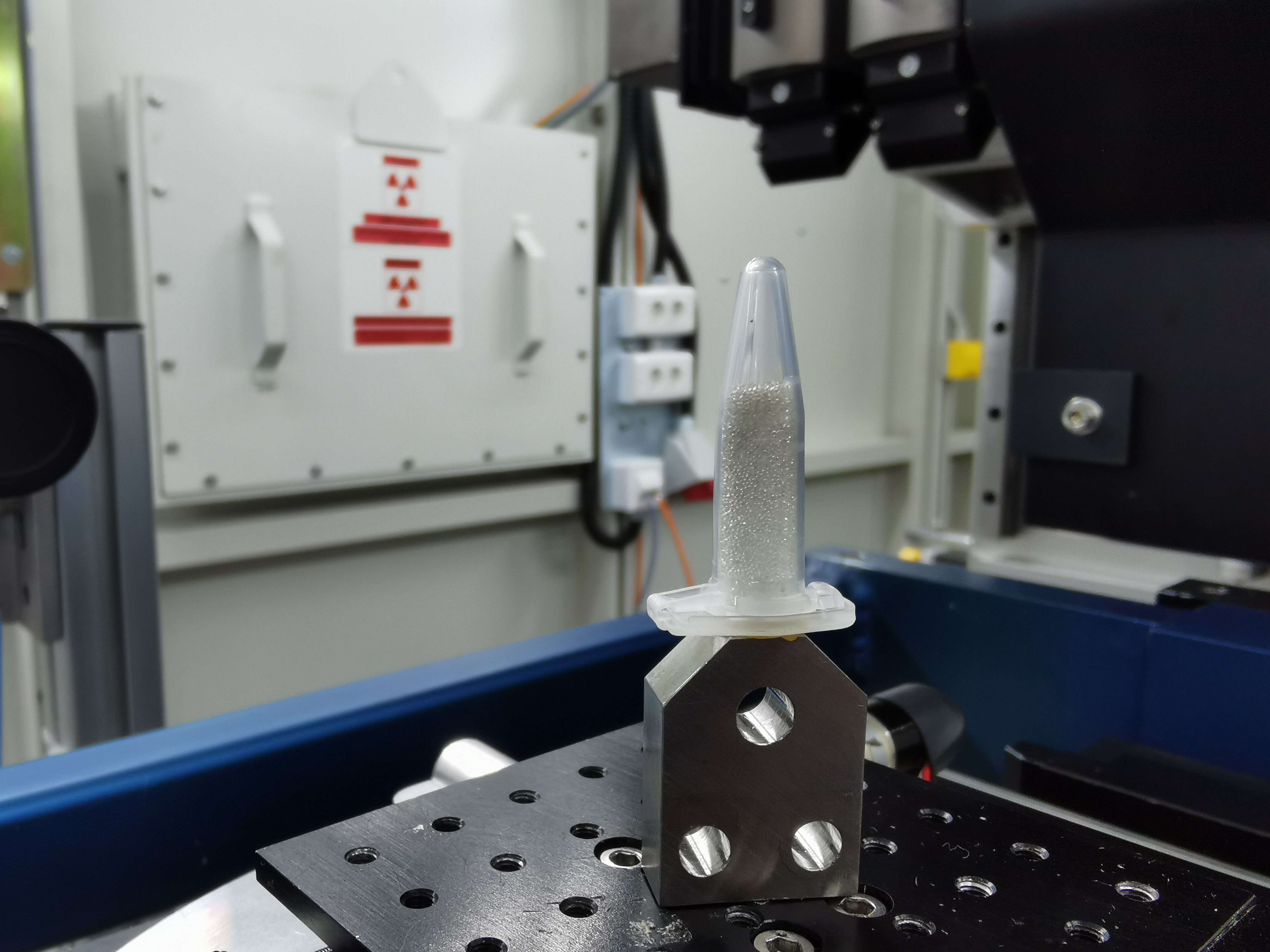
The availability of a SXCT (Synchrotron X-ray Computed Tomography) facility at the heart of Southwest Asia facilitates and enhances the non-destructive examination and conservation of ancient vitreous materials of the region, proving the relevance of the technique for archaeologists, museums, and cultural heritage specialists.
In recent measurements at SESAME’s ID10-BEATS beamline, users from Italy, Jordan, Palestine, Switzerland and Türkiye joined SESAME’s beamline scientists, Gianluca Iori, Latif Ullah Khan and Philipp Hans, in the application of Synchrotron X-ray Computed Tomography (SXCT) for the non-destructive analysis of ancient glass, faience, and several other vitreous materials. The results of their work have been published in the Journal of Cultural Heritage
The international and multidisciplinary composition of this team demonstrates not only the wide-ranging applications of synchrotron techniques, but also the collaborative spirit fostered by the Facility. This highlights how SXCT serves as a versatile tool for cultural heritage research across different geographical and academic contexts, and shows its potential to address varied scientific and conservation challenges.
The analysis of archaeological objects poses a set of challenges arising from the fragility and uniqueness of the materials, and requires special non-invasive techniques.
SXCT brings the solution to this as it provides high-resolution 3D X-ray images which, with no invasive techniques likely to damage the objects, permits the understanding of the structure and chemical composition of ancient artifacts. It also reveals details not detectable by conventional techniques.
Thanks to SXCT, researchers are able to examine fragile artifacts, and so understand how they were produced. It also provides information on their aging process, and how they are to be conserved for future generations, and this irrespective of the size of the objects.
Southwest Asia is a region particularly rich in archaeological objects. This makes SESAME’s facility of major importance since it is the only one in the region that enables archaeologists, museums, and cultural heritage specialists to examine these very valuable, but fragile, historical objects to the depth feasible with SCXT, and to preserve them for future generations.
As highlighted by SESAME’s current ID10-BEATS beamline scientist, Fareeha Hameed, the beamline offers cutting-edge research in advanced 3D imaging capabilities, such as absorption/transmission tomography, phase-contrast microtomography, and edge-sensitive imaging.
In her words, “The ID10–BEATS beamline is a revolutionary tool that opens up new frontiers in 3D imaging for a wide array of disciplines. From archaeology to materials science, life sciences, and environmental studies, the ability to conduct in situ dynamic experiments is invaluable. The beamline enables real-time imaging of processes such as battery charging and discharging, fluid flow in geological materials, and temperature-related phenomena in materials under stress. With the current ability to deliver both qualitative and quantitative results, the ID10-BEATS beamline is poised to attract a great variety of users from multiple fields and industry.”
The ID10-BEATS beamline was made possible thanks to a generous grant of the European Union.

